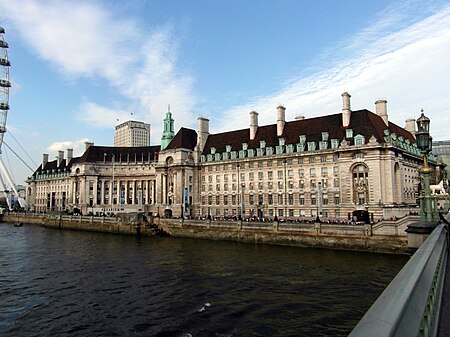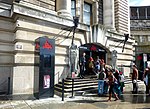County Hall, London
Baroque Revival architectureBuildings and structures on the River ThamesCity and town halls in LondonCounty halls in EnglandEdwardian architecture in London ... and 8 more
Exhibition and conference centres in LondonGovernment buildings completed in 1939Grade II* listed buildings in the London Borough of LambethGreater London CouncilHistory of the London Borough of LambethLocal government buildings in LondonLondon County CouncilUse British English from April 2022

County Hall (sometimes called London County Hall) is a building in the district of Lambeth, London that was the headquarters of London County Council (LCC) and later the Greater London Council (GLC). The building is on the South Bank of the River Thames, with Westminster Bridge being next to it, to the south. It faces west toward the City of Westminster and is close to the Palace of Westminster. The nearest London Underground stations are Waterloo and Westminster. It is a Grade II* listed building.
Excerpt from the Wikipedia article County Hall, London (License: CC BY-SA 3.0, Authors, Images).County Hall, London
Belvedere Road, London Lambeth (London Borough of Lambeth)
Geographical coordinates (GPS) Address Nearby Places Show on map
Geographical coordinates (GPS)
| Latitude | Longitude |
|---|---|
| N 51.501944444444 ° | E -0.11888888888889 ° |
Address
The Club at County Hall
Belvedere Road
SE1 7GA London, Lambeth (London Borough of Lambeth)
England, United Kingdom
Open on Google Maps








